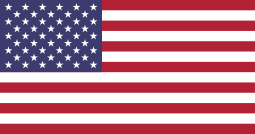How Genetics Determine Your Horse's Color
It's all about Genes
Imagine breeding a black mare to a black stallion and having a chestnut foal. You might be wondering; how did this happen? The answer lies in coat color genetics. Before diving into unique coat colors, patterns and markings, a basic review of genetic terminology is required. Let’s begin with a discussion of genotype versus phenotype. A genotype is the genetic makeup of a given physical trait. A phenotype is the physical expression of a genetic trait. To easily distinguish between the two, think of phenotype beginning with a “p” just as photo, which is what you will visually see. Next, we have homozygous, when there are two copies of the same allele for a gene (E/E or e/e). Whereas, heterozygous which occurs when there is one dominate and one recessive allele (E/e). Our final genetics vocabulary review includes dominate and recessive traits. A trait is said to be dominate when only one copy of the mutation is needed for the trait to be expressed outwardly (E/E or E/e). A recessive trait requires two copies of the mutation for the trait to be expressed outwardly (e/e).
Base Coat
Bay
Following our red and black horses, next up is a bay. A bay horse is a black horse (E/E or E/e) with the agouti gene turned “on” (A/A or A/a). The agouti gene controls the location of black on the horse’s coat. The agouti gene is dominate and when turned “on” limits the black pigment to the mane, tail, and lower legs. As a result, the body of a bay horse is any shade of brown ranging from a light tan or dark seal color with black points.
Palomino/Buckskin
What colors result when the cream dilution is present? This brings us to a discussion of palomino and buckskin horses. A palomino horse is red (e/e) with the agouti gene turned “off” (a/a) and has a copy of the cream dilution mutation (Cr). A palomino has a golden coat color ranging from a light off white to deep golden brown with a light- or cream-colored mane and tail. However, a buckskin is a black horse (E/E or E/e) with the agouti gene turned “on” (A/A or A/a) and has a copy of the cream dilution mutation (Cr). Given this knowledge, we can conclude a buckskin is a bay horse that is heterozygous for the cream dilution mutation. A buckskins body color ranges from yellowish to gold and has black points.
Grullo/Dun
What colors result when the dun mutation is present? This brings to light our dun and grullo coat colors. The dun mutation is a dominate trait affecting the horse’s primary base color. A dun horse is a black horse (E/E or E/e) with the agouti gene turned “on” (A/A or A/a) and a copy of the dun mutation (Dn/). A dun’s body color ranges from yellowish to gold and their mane and tail may be black, brown, red, yellow, white or mixed. Dun horses have a dorsal stripe down their backs and some zebra stripping on their forearms. Moving onto the grullo, this is a black horse (E/E or E/e) that has the agouti gene turned “off” (a/a) and a copy of the dun mutation (Dn/). The body color of a grullo is often described as smoky or mouse color. Grullo’s often have a dorsal stripe and zebra stripping.
Roan vs. Gray
What is the difference in a gray and roan horse? A gray horse is going to be born dark in color and eventually lose the color pigment in their hair until they are all or nearly white. To produce a gray horse, at least one parent must contribute a dominate G. Non-gray horses have two recessive genes (g/g). A gray gene is going to mask the base coat for all colors. Although, gray and roan horses look similar, the genetics of the two are different. Instead of lightening in color over time like the gray, the roan horses retain dark heads and legs and have a mixture of white and colored hairs over the rest of the body. The roan gene gives the horse a uniform mixture of white hairs on the body. Various colors of roans a present depending on the base coat color. For example, a blue roan is a black horse (E/E or E/e) with the roan gene (Rn/). A red roan or a strawberry roan is a red horse (e/e) with a roan gene (Rn). Other colors of roans include bay and palomino.
 Made In USA
Made In USA
















